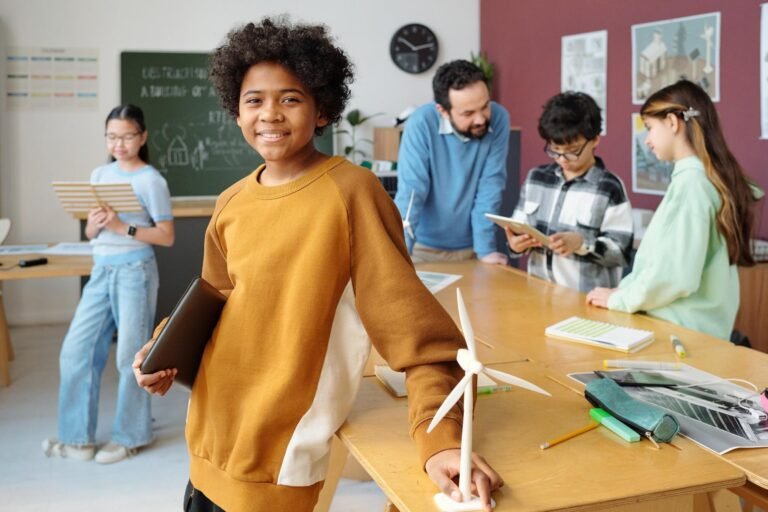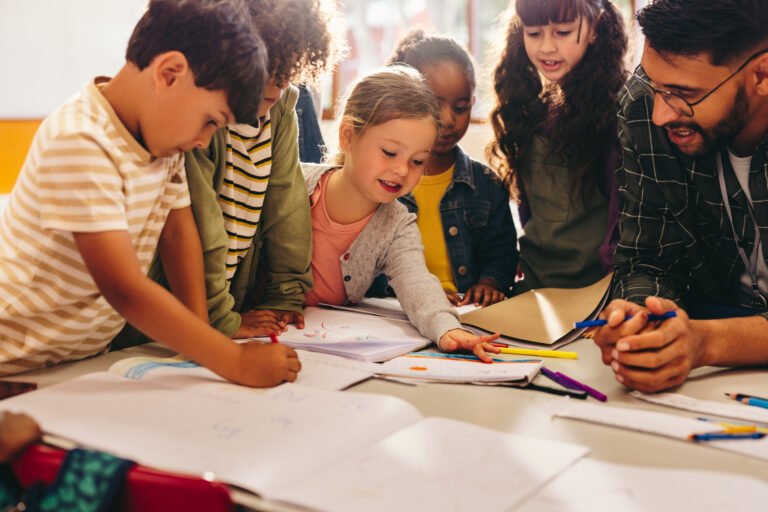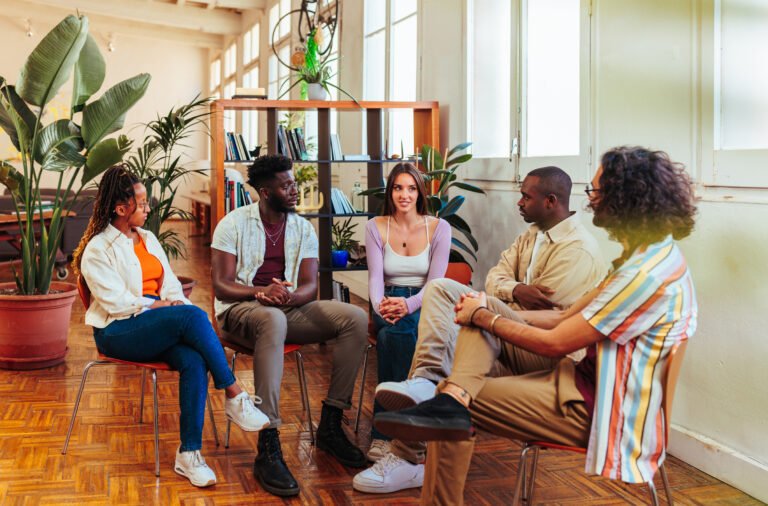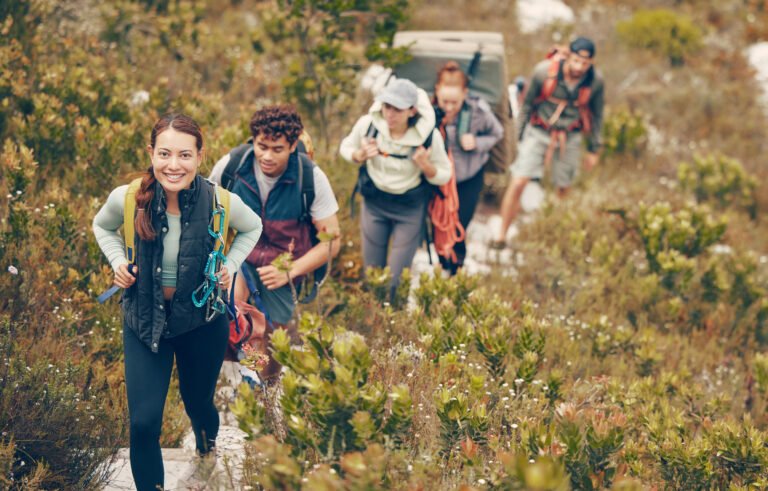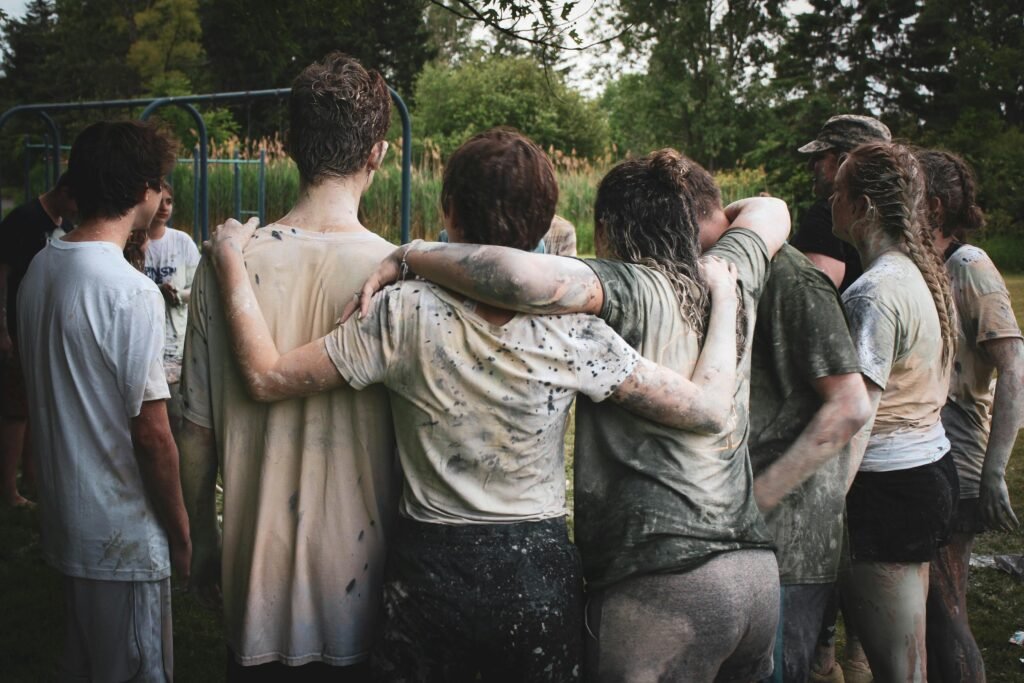
Earth Day activities offer practical ways to engage gifted learners by combining critical thinking, varied learning styles, and meaningful challenges that promote environmental awareness and support essential skills like problem-solving and test preparation in a low-prep, hands-on format.
Ever wish you could celebrate Earth Day activities in a way that actually sparks your students’ brains — not just get them to color posters? I think this part is so powerful because it’s about mixing fun with real challenge, especially for gifted kids who need more than the usual recycling spiel. In my experience, these activities keep kids engaged while sneaking in some test prep, too. Stick around if you want ideas that work for busy classrooms and curious minds.
Why Earth Day matters and its educational potential
Earth Day isn’t just a date on the calendar—it’s a chance to spark real change in how we see our planet. You know, it’s like planting a seed in young minds that grows into lifelong care for the environment.
So why does Earth Day matter in education? It brings lessons to life—literally outside the textbook. Kids get hands-on with nature and develop critical thinking about their impact. Heck, studies show that learning through experience improves retention by up to 75%. That’s a game-changer compared to just reading facts.
But it’s not all serious—making Earth Day fun and interactive helps kids, especially gifted learners, connect deeply. They start asking questions like, “What can I do to help?” or “Why is this ecosystem important?” And that curiosity? It’s the engine for lifelong learning.
Think of Earth Day as more than just a cleanup—it’s an educational adventure. You could compare it to a field trip for the brain—fresh air, active engagement, and a real-world impact. Schools that tap into this potential often see kids more motivated, with better problem-solving skills tied right to science and social studies standards. That’s right, this isn’t just fluff; it supports test prep too.
How critical thinking enhances Earth Day learning
Critical thinking turns a simple Earth Day lesson into a powerful learning moment. It’s like sharpening your thinking muscles by asking, “Why does this matter?” or “How could I make a difference?”
You know, it’s not just about facts—it’s about digging deeper. For example, rather than just knowing recycling is good, kids explore what happens if we don’t recycle. This kind of questioning builds problem-solving skills and real-world awareness.
Here’s the deal: encouraging students to analyze, evaluate, and create their own solutions helps them feel connected and responsible. And honestly, that connection sticks better than any lecture.
Try this simple approach:
- Ask open-ended questions that invite discussion.
- Challenge assumptions—like “Is all trash bad for Earth?”
- Use real examples: What happens to plastic in oceans?
A 2020 study from the U.S. Department of Education found that students who engage in critical thinking activities improve test scores by up to 20%. So, yes, you’re sneaking in test prep while saving the planet.
Honestly, fostering this mindset is like giving your brain a bubble bath—it refreshes and prepares it for bigger challenges ahead.
Varied low-prep activities for different learning styles
Finding the right Earth Day activities can feel like juggling, right? Honestly, low-prep options make the whole thing doable and keep kids excited.
Here’s the cool part: kids learn best when activities match their learning style. So, mixing things up is key.
- Visual learners love diagrams, charts, and drawing. Try a nature collage or an Earth themed infographic project.
- Kinesthetic learners thrive with hands-on stuff. Think planting seeds or a trash scavenger hunt — all super low prep.
- Auditory learners benefit from discussions or storytelling. Host a group talk about local environmental issues.
- Read/write learners enjoy journaling or research. Assign a simple Earth Day essay or fact-finding mission online.
Switching between these makes lessons pop. You might even throw in a quick quiz or game. Heck, mixing learning modes is like giving your brain a bubble bath — refreshing and fun.
Plus, studies show varied approaches help improve retention by nearly 40%. So, you’re not just prepping for a day, you’re prepping for a brighter future.
Tailoring Earth Day lessons for gifted students
Tailoring Earth Day lessons for gifted students means giving them challenges that truly spark curiosity. You know, gifted kids often breeze through standard activities. So, it’s about stepping up the game without overwhelming them.
Try offering open-ended projects like creating a sustainability plan for their school. I thought—wait, maybe not every kid wants to be a city planner, but this kind of task gets their critical thinking kicking.
Here are some great ideas to keep gifted learners engaged:
- Encourage research dives on specific environmental issues and their solutions.
- Invite them to lead group discussions or presentations.
- Use problem-solving tasks, like designing an eco-friendly product.
Remember, these activities don’t have to be high prep. Even having students debate topics like renewable energy vs. conservation can spark big thoughts.
Interestingly, a 2018 study by the National Association for Gifted Children found that tailored lessons can boost engagement and retainment by over 30%. So, yes, customizing Earth Day isn’t just fair—it’s effective.
Wrapping up
Exploring Earth Day activities with gifted learners can be a real game changer. Mixing critical thinking, varied learning styles, and tailored challenges makes the day both fun and meaningful. It’s all about sparking curiosity and letting kids feel empowered.
Remember, you don’t need fancy materials or tons of prep to make a big impact. Small, thoughtful activities can light up young minds and plant seeds for lifelong care of our planet. And heck, if you add a little creativity, it’s like giving their brains a fresh burst of energy.
So, here’s a gentle nudge: take a moment to think about one small way you can bring these ideas to life, whether in the classroom or at home. Hey, it’s okay to not know where to start—just grab a pencil and breathe. Every bit counts.
FAQ — your questions about Earth Day activities answered
What are some easy Earth Day activities for kids?
Simple activities like planting seeds, nature walks, and recycling projects work well and need little preparation.
How can Earth Day lessons benefit gifted students?
They encourage deeper thinking and creativity, which keeps gifted learners engaged and challenged.
Can Earth Day activities help with test preparation?
Yes, by integrating critical thinking and problem-solving, these activities support skills used in standardized tests.
Is it important to tailor Earth Day lessons to different learning styles?
Definitely—matching activities to how kids learn helps them absorb info better and enjoy the day more.
Should parents get involved in Earth Day projects?
Absolutely—parents can boost learning by supporting projects at home and encouraging discussions about the environment.
What’s a good way to start teaching kids critical thinking on Earth Day?
Ask open-ended questions about real environmental issues to get kids thinking beyond facts to possible solutions.

A certified Heal Your Life® Coach with 20+ years in education and emotional development. Supports gifted teens in navigating anxiety, perfectionism, and identity challenges, while equipping parents with practical tools for lasting transformation. Sessions blend emotional healing, mindset mastery, and strategic empowerment.
